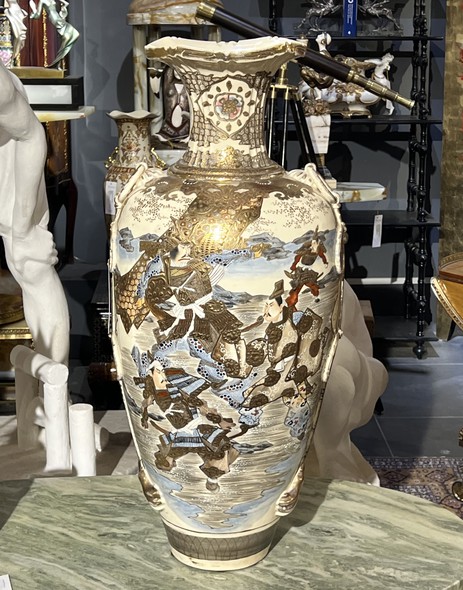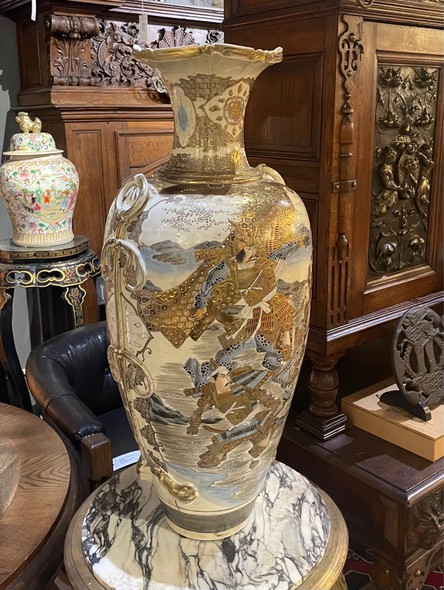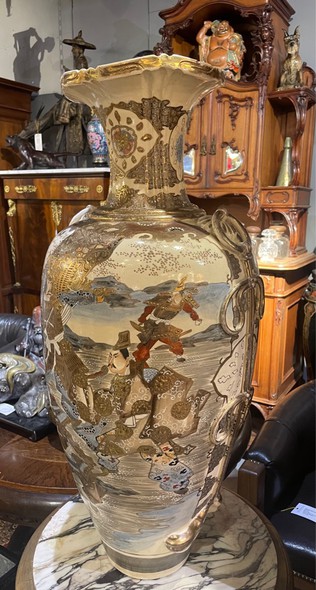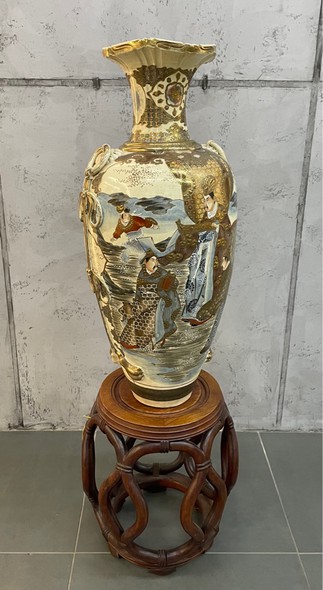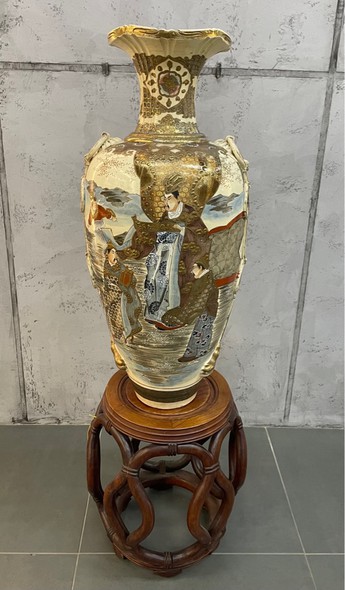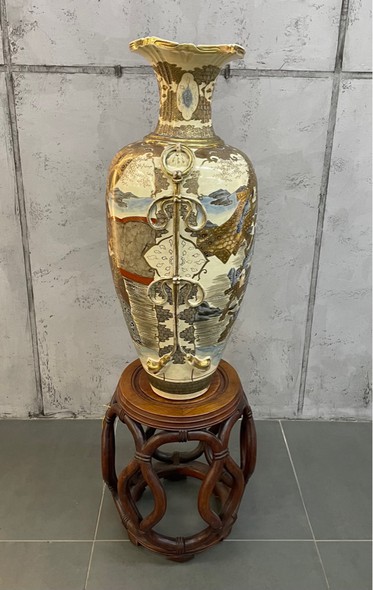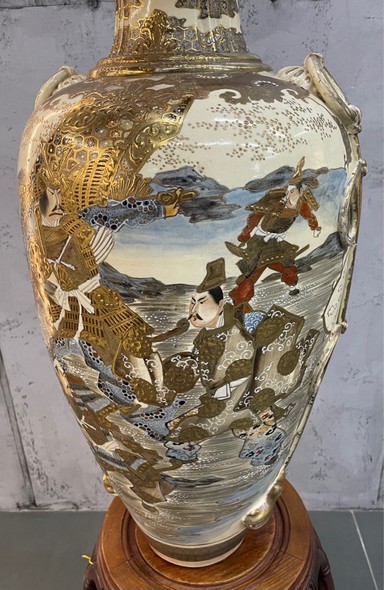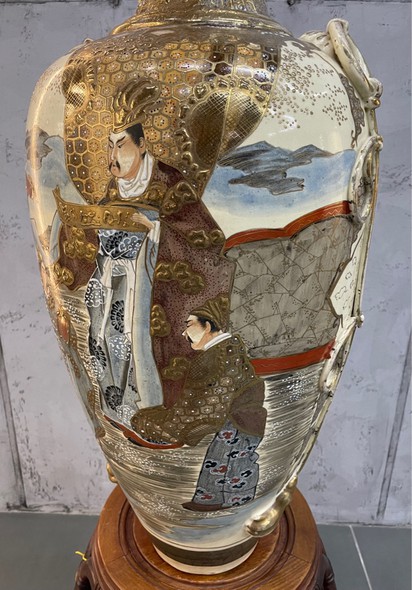Antique vase, Satsuma
The antique vase is made of light ceramic mass and covered with bright painting and partial gilding. The main subject of the painting was a military scene with soldiers and samurai; this subject was conventionally called the Kyoto style. The vase depicts figures in kariginu hunting garb, typical of the Heian period. The surface of the body of the vase is decorated with overglaze painting and gilding in combination with tinting of unglazed fragments, the so-called “brocade” technique, called nishikide. On the sides there are stylized handles in the form of knotted plaits with tassels at the ends. At the bottom of the vase there is craquelure and markings, Japanese semi-cursive gyosho. Japan, XIX century.
The ware known as Satsuma (also the surname of a prominent clan and place name) is a ware with beige or yellow shards decorated with fine gold designs with careful detailing in polychrome paints. The Satsuma workshops were founded in the 17th century. Korean masters who arrived in the country in 1598 had a great influence on Japanese ceramics. Satsuma pottery was originally a red-brown ceramic base with a minimalist straight pattern and a colorless glaze. Such items served a purely utilitarian function. Korean craftsmen brought it from special white clay brought from Korea. But soon the clay reserves ran out and it turned out that it was impossible to find such raw materials in Japan due to the high content of iron oxide in the soils. For a long time, Satsuma ceramics were made exclusively from Korean clay, which was regularly imported; the demand for ceramics was several times higher than the supply, and the prices for such products were extremely high. Only after many years of searching in the Satsuma province was white clay found near the settlement of Seigawa. In 1675, the first colored products with glaze dyes appeared. At the end of the 19th century, Satsuma ceramics were conventionally divided into two more groups: imperial and Kyoto. The main subject for Satsuma vases are figures of Japanese samurai and aristocrats in traditional sokutai clothing. Most of the pieces were made between the late 1890s and early 1920s. Some items were made specifically for export. Production soon spread to several cities such as Kyoto, Tokyo, Nagoya, Yokohama and other cities in Japan, from the Meiji period (1868-1912) to the present day. Ceramics depicting Satsuma Kamon were produced far beyond the borders of Kyushu.
Antique vase, Satsuma
- Артикул
- 02_5559
- Available:
- Sold
- In section:
- furniture and décor in oriental style, vintage japanese vases, miscellaneous, decor, antique vases, other, gifts, for leaders, for men, vip gifts, for women
Обозначение размеров:
- H – высота,
- W – ширина,
- D – глубина,
- d – диаметр
- Style:
- Oriental
- Period:
- XXth century

